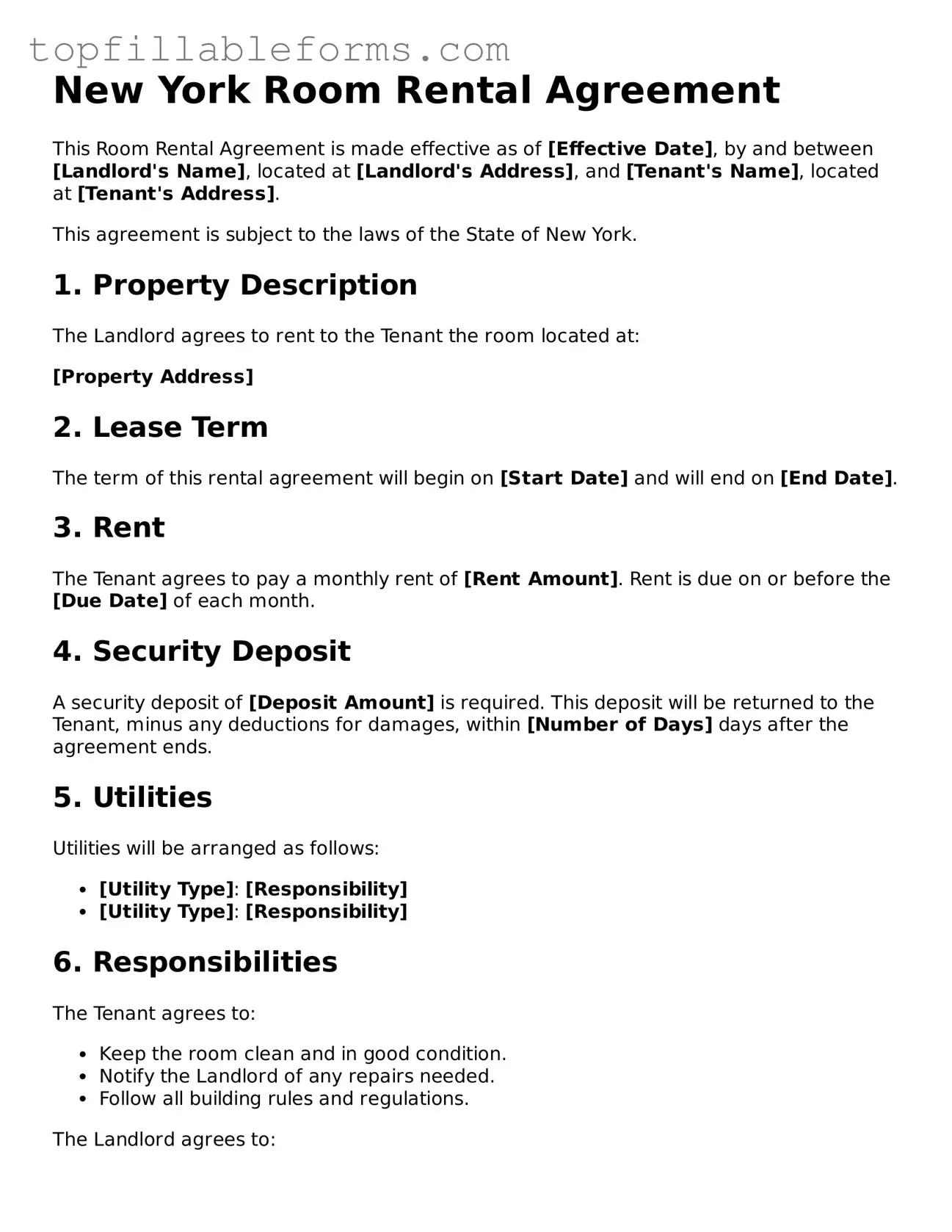New York Room Rental Agreement
This Room Rental Agreement is made effective as of [Effective Date], by and between [Landlord's Name], located at [Landlord's Address], and [Tenant's Name], located at [Tenant's Address].
This agreement is subject to the laws of the State of New York.
1. Property Description
The Landlord agrees to rent to the Tenant the room located at:
[Property Address]
2. Lease Term
The term of this rental agreement will begin on [Start Date] and will end on [End Date].
3. Rent
The Tenant agrees to pay a monthly rent of [Rent Amount]. Rent is due on or before the [Due Date] of each month.
4. Security Deposit
A security deposit of [Deposit Amount] is required. This deposit will be returned to the Tenant, minus any deductions for damages, within [Number of Days] days after the agreement ends.
5. Utilities
Utilities will be arranged as follows:
- [Utility Type]: [Responsibility]
- [Utility Type]: [Responsibility]
6. Responsibilities
The Tenant agrees to:
- Keep the room clean and in good condition.
- Notify the Landlord of any repairs needed.
- Follow all building rules and regulations.
The Landlord agrees to:
- Provide a safe and habitable environment.
- Make necessary repairs in a timely manner.
7. Termination
Either party may terminate this agreement with [Notice Period] notice. Upon termination, the Tenant must vacate the premises and return all keys.
8. Signatures
By signing below, both parties agree to the terms outlined in this Room Rental Agreement.
_____________________________ [Landlord's Name] (Landlord)
Date: ______________
_____________________________ [Tenant's Name] (Tenant)
Date: ______________
